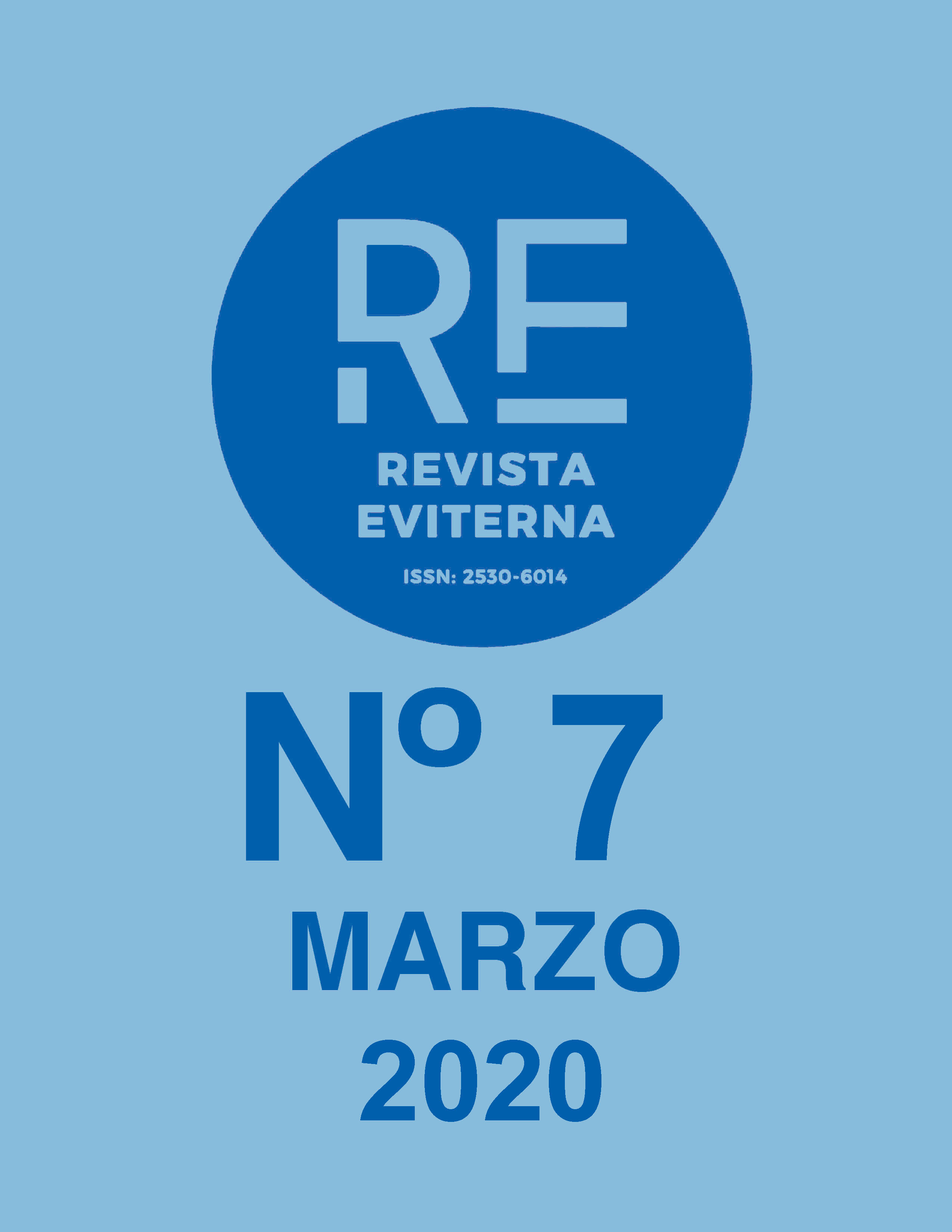Estudio comparativo de las obras funerarias: “El último aliento” de Artur Prat (1914) y “El beso de la muerte” de Jaume Barba (1930)
DOI:
https://doi.org/10.24310/Eviternare.v0i7.8383Palabras clave:
escultura funeraria; iconografía funeraria; mármol; muerte; cementerioResumen
No nos debe resultar extraño que sea en los cementerios donde podemos encontrar las más notables representaciones artísticas de La Muerte. Su figura a lo largo de la historia ha estado siempre cargada de múltiples formas. Al igual que ha ocurrido siempre en otros ámbitos, en el arte funerario se puede observar una combinación de culturas, una fusión de ideas, formas, provocada por las numerosas civilizaciones que han habitado en un mismo territorio y han coexistido durante largo tiempo. El ser humano ha intentado siempre, y sigue intentándolo, discernir lo desconocido, aquello que le resulta incomprensible, intentando representarlo a través de la imaginación, con el objetivo de hacerlo asumible, y que calme ese miedo al punto final, de no retorno.
En este artículo vamos a fijar nuestra atención en dos manifestaciones escultóricas de La Muerte, ubicadas ambas en dos camposantos diferentes y en épocas también distintas: «El último aliento» en el Cementerio de Aveiro y «El beso de la muerte», en el Cementerio de Poble Nou, Barcelona.
Descargas
Métricas
Publicación Facts
Perfil de revisores N/D
Información adicional autores
Indexado: {$indexList}
-
Indexado en
- Sociedad Académica/Grupo
- N/D
- Editora:
- Universidad de Málaga
Citas
Bulmer, Jane (2016). Higate cemetery. saved by its friends. jigsaw design & publishing.Norwich: London.
Coutinho, B., y Baptista, M. M. (2014). “Cementêrio Central de Aveiro: entre a vida e a morte”In M. M. Baptista, Europea das Nacionalidades: Mitos de origens, historia e discursos. Gràcio editor: Coimbra.
Freixa, Mireia.: “La escultura funeraria en el modernismo catalán”, Fragmentos, nº 3 Ministerio de Cultura, 1984
Hernández Latas, José. Antonio. (2003): Lágrimas de piedra: la escultura en los cementerios públicos. En Lacrra Ducay, M.C. & Giménez Navarro, C. Historia y Política a través de la Escultura Pública1820-1920. Excelentísima Diputación de Zaragoza: Zaragoza.
Villarreal Acosta, Alba R. (2013): La Representación de La Muerte en la Literatura Mexicana. Formas de su Imaginario(Tesis Doctoral). Universidad Complutense: Madrid.
Redondo Cantera, María. José(2005): Aproximación a la escultura funeraria española del siglo XIX. En Actas del II Congreso Español de Historia del Arte (1979). Comité Español de Historia del Arte: Valladolid
Archivo Distrito de Aveiro, Aveiro (ADA, Aveiro) Recuperado de: http://www.cmaveiro.pt/www/output_efile.aspx?id_file=21416&id_object=32705
Arola,R. La muerte del beso. Recuperado de: https://www.arsgravis.com/?s=la+muerte
Blanco Sánchez, C. Como sutil caricia enSalamanca al día. Recuperado de: http://salamancartvaldia.es/not/151162/como-sutil-caricia/
A.A.V.V. El beso en la historia del arte. En Revista Actticus. p 48. Recuperado de: http://revistaatticus.es/old/Revistas/Monografico_4_El _Beso.pdf
Díez Carrera, M.C. El Beso de la Muerte. Recuperado de: https://www.rutasconhistoria.es/loc/el-beso-de-la-muerte
La Hornacina. El beso de la muerte.Recuperado de: http://www.lahornacina.com/curiosidadesdifuntos16.htm
Descargas
Publicado
Cómo citar
Número
Sección
Licencia
Todos los contenidos publicados en Revista Eviterna están sujetos a la licencia Creative Commons Reconocimento-NoComercia-Compartirigual 4.0 cuyo texto completo puede consultar en <http://creativecommons.org/licenses/by-nc-sa/4.0>

Se pueden copiar, usar, difundir, transmitir y exponer públicamente, siempre que:
- Se cite la autoría y la fuente original de su publicación (revista, editorial y URL de la obra).
- No se usen para fines comerciales.
- Se mencione la existencia y especificaciones de esta licencia de uso.
Los derechos de autor son de dos clases: derechos morales y derechos patrimoniales. Los derechos morales son prerrogativas perpetuas, irrenunciables, intransferibles, inalienables, inembargables e imprescriptibles.
De acuerdo con la legislación de derechos de autor, Revista Eviterna reconoce y respeta el derecho moral de los autores/as, así como la titularidad del derecho patrimonial, el cual será cedido a la Universidad de Málaga para su difusión en acceso abierto.
Los derechos patrimoniales, se refieren a los beneficios que se obtienen por el uso o divulgación de las obras. Revista Eviterna se publica en open access y queda autorizada en exclusiva para realizar u autorizar por cualquier medio el uso, distribución, divulgación, reproducción, adaptación, traducción o transformación de la obra.
Es responsabilidad de los autores/as obtener los permisos necesarios de las imágenes que están sujetas a derechos de autor.







12.png)



